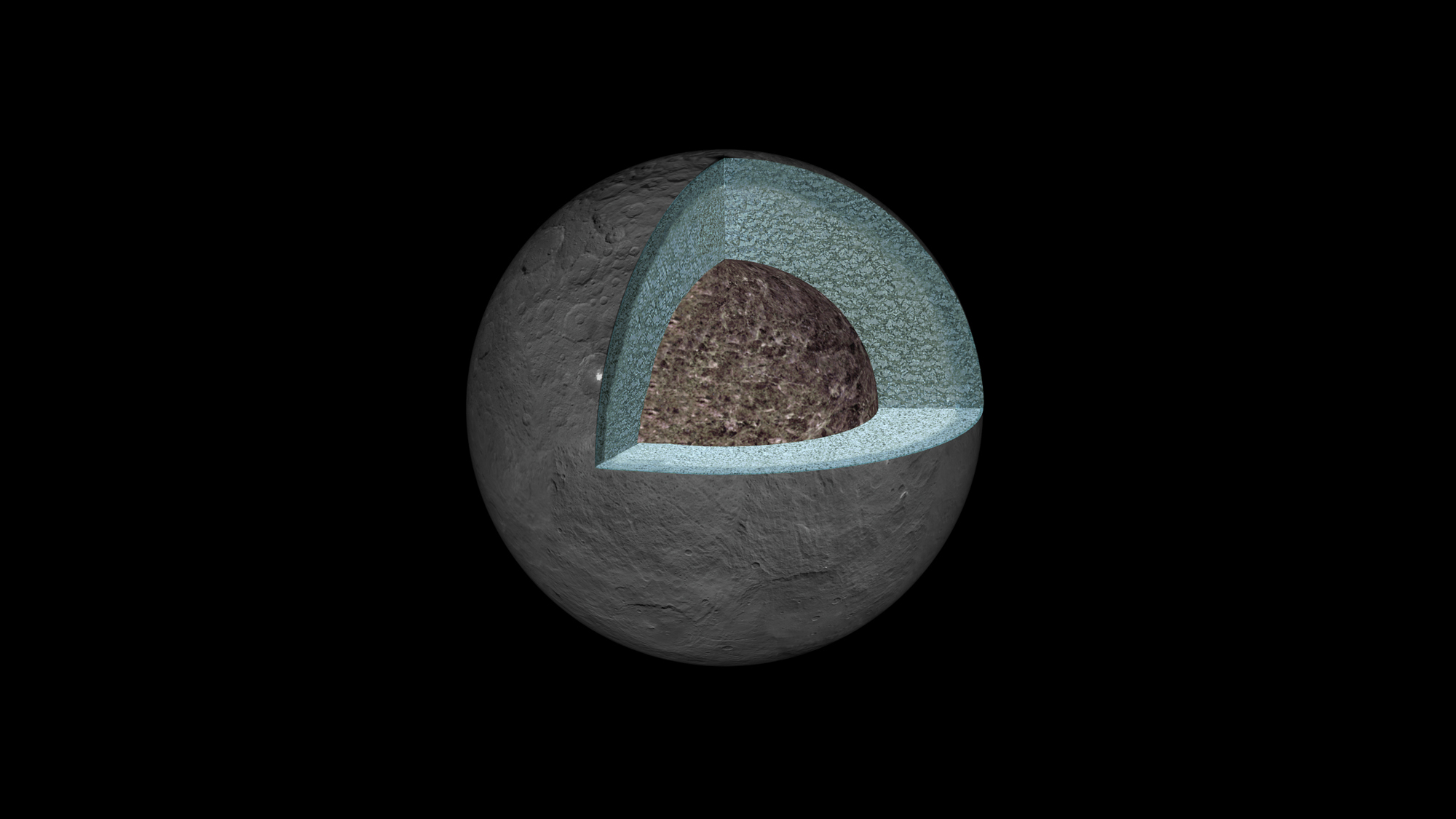Icy Dwarf Planet Ceres May Have a Warm Heart

Under the surface of the dwarf planet Ceres are strange jumbled zones that are mixes of ice and rock, a new study finds.
This research suggests that Ceres might still be warmed by radioactive material in its interior, scientists say.
With a diameter of about 585 miles (940 kilometers), Ceres is by far the biggest member of the asteroid belt located between Mars and Jupiter. Previous remote analysis of Ceres using ground- and space-based telescopes suggested that it was not as dense as other large asteroids such as Vesta. This suggested that Ceres was not made up solely of rock, but composed partly of both icy and rocky material. [Awesome Photos of Ceres]
However, scientists weren't sure how the innards of Ceres were structured. Whereas Earth developed an onion-like structure fully differentiated into distinct layers — an outer crust, a central core and a mantle layer between the two — prior research suggested that Ceres might only be partially differentiated into more vague zones, or perhaps not differentiated at all. Shedding light on the structure of Ceres might, in turn, yield insight into how it and other asteroids and dwarf planets evolved over time.
One property of Ceres that might reveal more about its structure is how easy or difficult it is for the dwarf planet to spin. This property, technically known as the moment of inertia, is related to how mass is distributed within a celestial body: The lower the moment of inertia, the more dense material is concentrated in a body's center.
To determine the moment of inertia of Ceres, scientists needed to analyze the dwarf planet's gravity field. Anything that has mass has a gravity field that attracts objects toward it, and the strength of this field depends on a body's mass. Because the mass of bodies such as Earth and Ceres is not spread out evenly, this means their gravity fields are stronger in some places on their surfaces and weaker in others.
The researchers examined gravity-field data that NASA's Dawn spacecraft gathered from its close encounter with Ceres. Their work suggests that Ceres is only partially differentiated, with a core made of rock overlaid by a shell composed of a mix of icy, salty and rocky material that is about 43.5 to 120 miles (70 to 190 km) thick.
Breaking space news, the latest updates on rocket launches, skywatching events and more!
"The partial differentiation suggests that Ceres was hot at one point, but it did not fully separate the water and other volatiles from its rocky components," study lead author Ryan Park, a planetary scientist at NASA's Jet Propulsion Laboratory in Pasadena, California, told Space.com.
The scientists also detected signs that Ceres' interior might still be warm. This was a bit of a surprise, because previous research suggested that a body as small as Ceres should have cooled off a long time ago. This new finding indicates that Ceres might have a warm interior because of heat from radioactive material, Park said.
The scientists detailed their findings online Aug. 3 in the journal Nature.
Follow Charles Q. Choi on Twitter @cqchoi. Follow us @Spacedotcom, Facebook and Google+. Original article on Space.com.

Charles Q. Choi is a contributing writer for Space.com and Live Science. He covers all things human origins and astronomy as well as physics, animals and general science topics. Charles has a Master of Arts degree from the University of Missouri-Columbia, School of Journalism and a Bachelor of Arts degree from the University of South Florida. Charles has visited every continent on Earth, drinking rancid yak butter tea in Lhasa, snorkeling with sea lions in the Galapagos and even climbing an iceberg in Antarctica. Visit him at http://www.sciwriter.us

